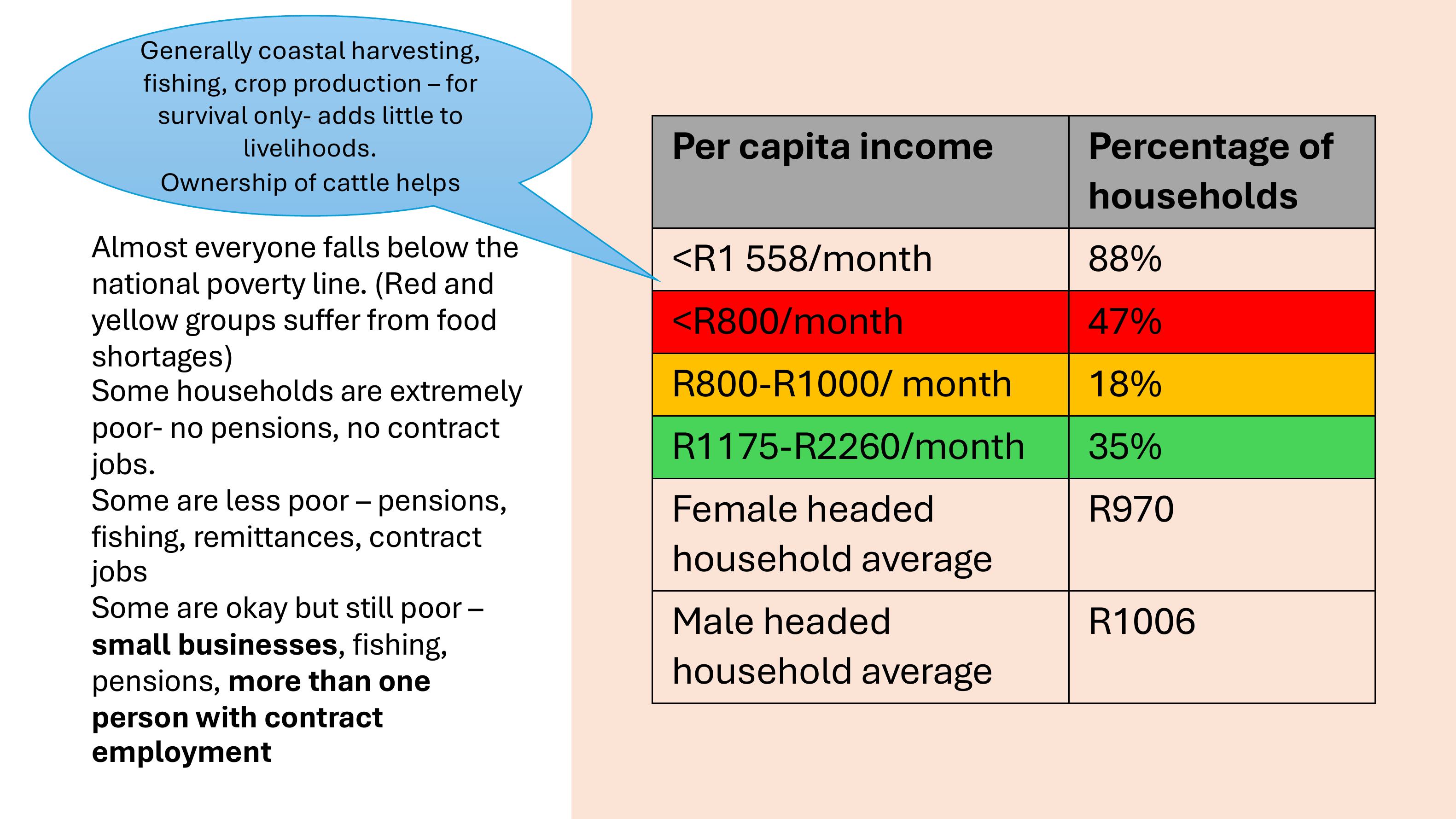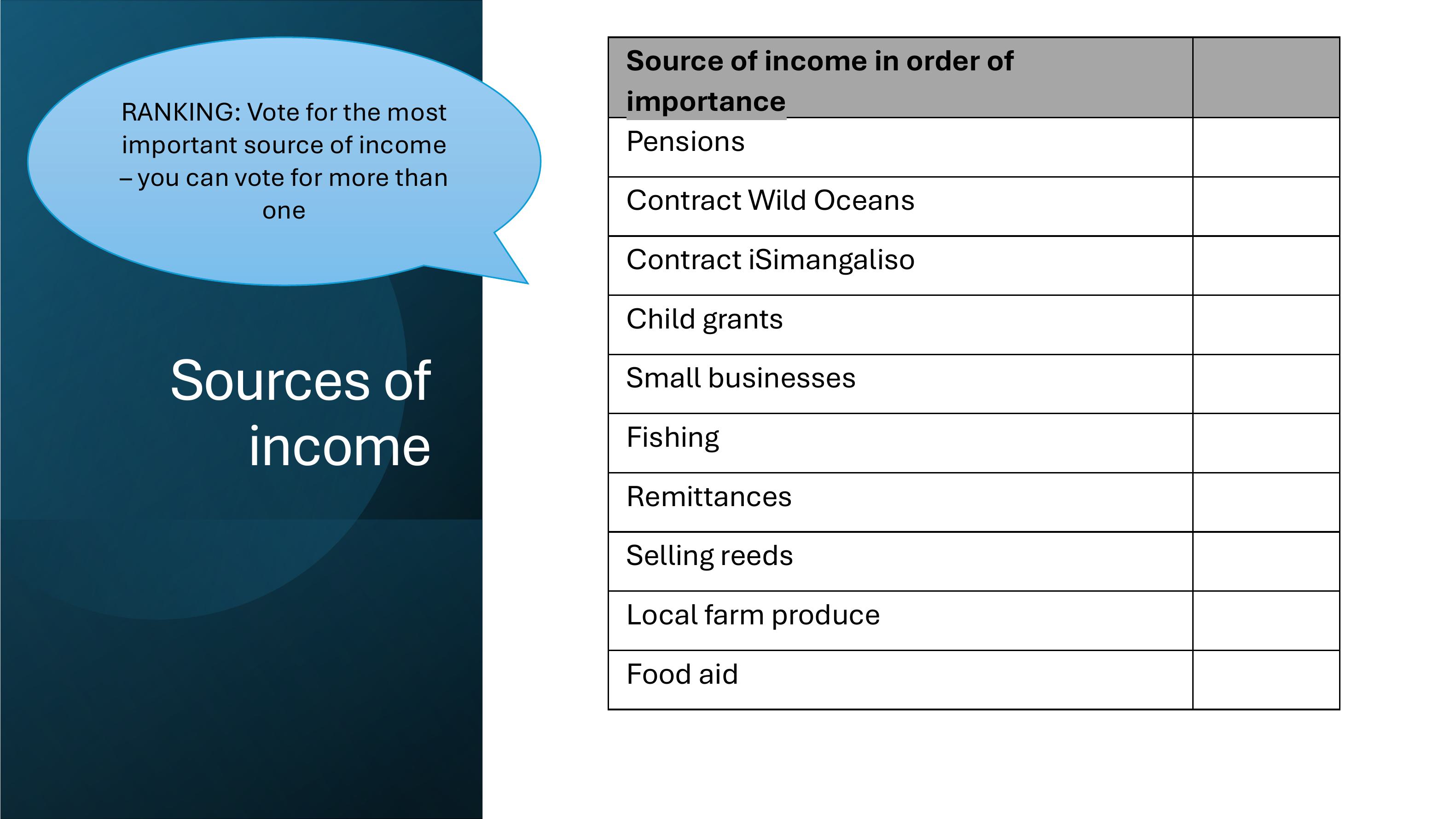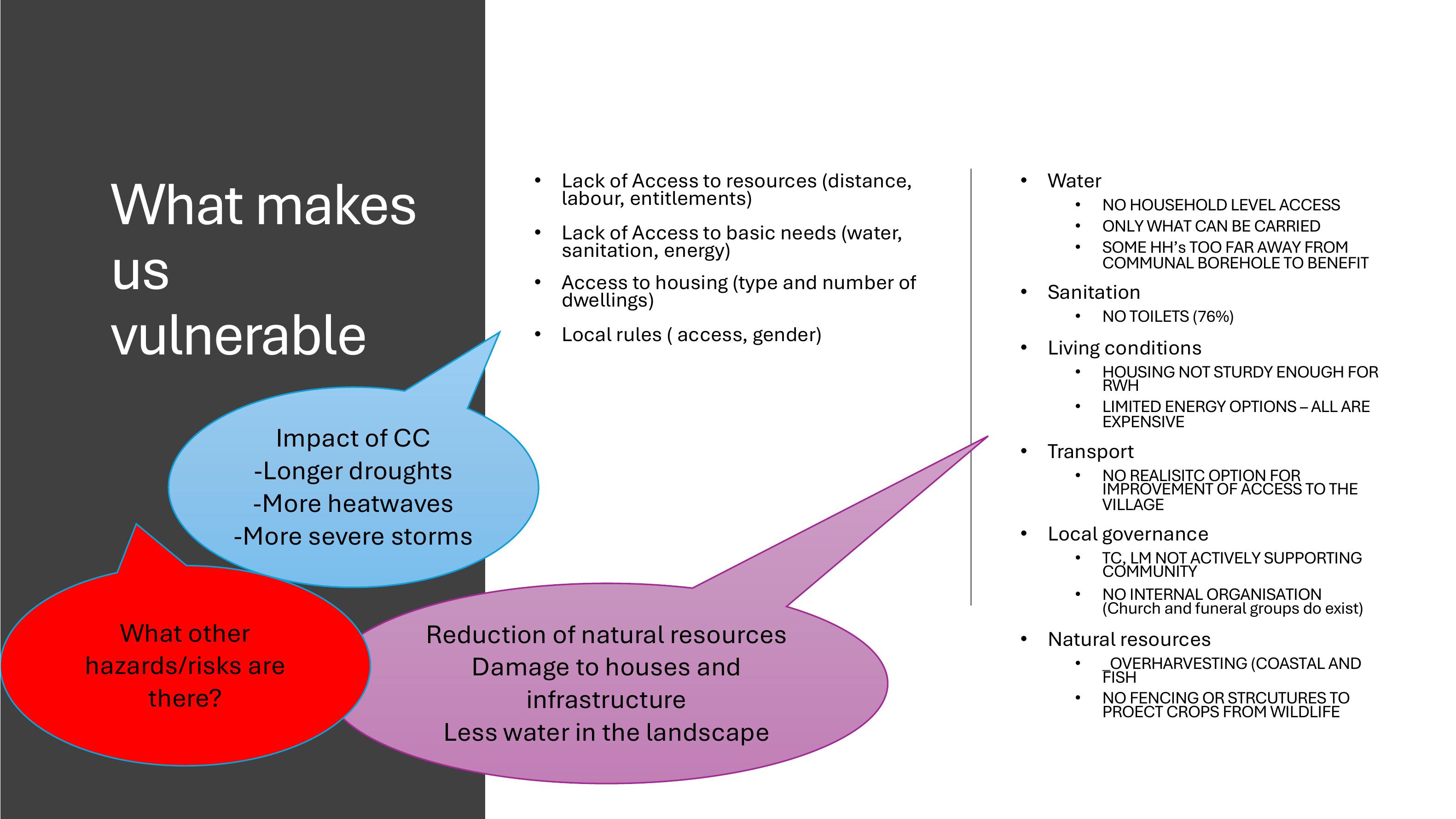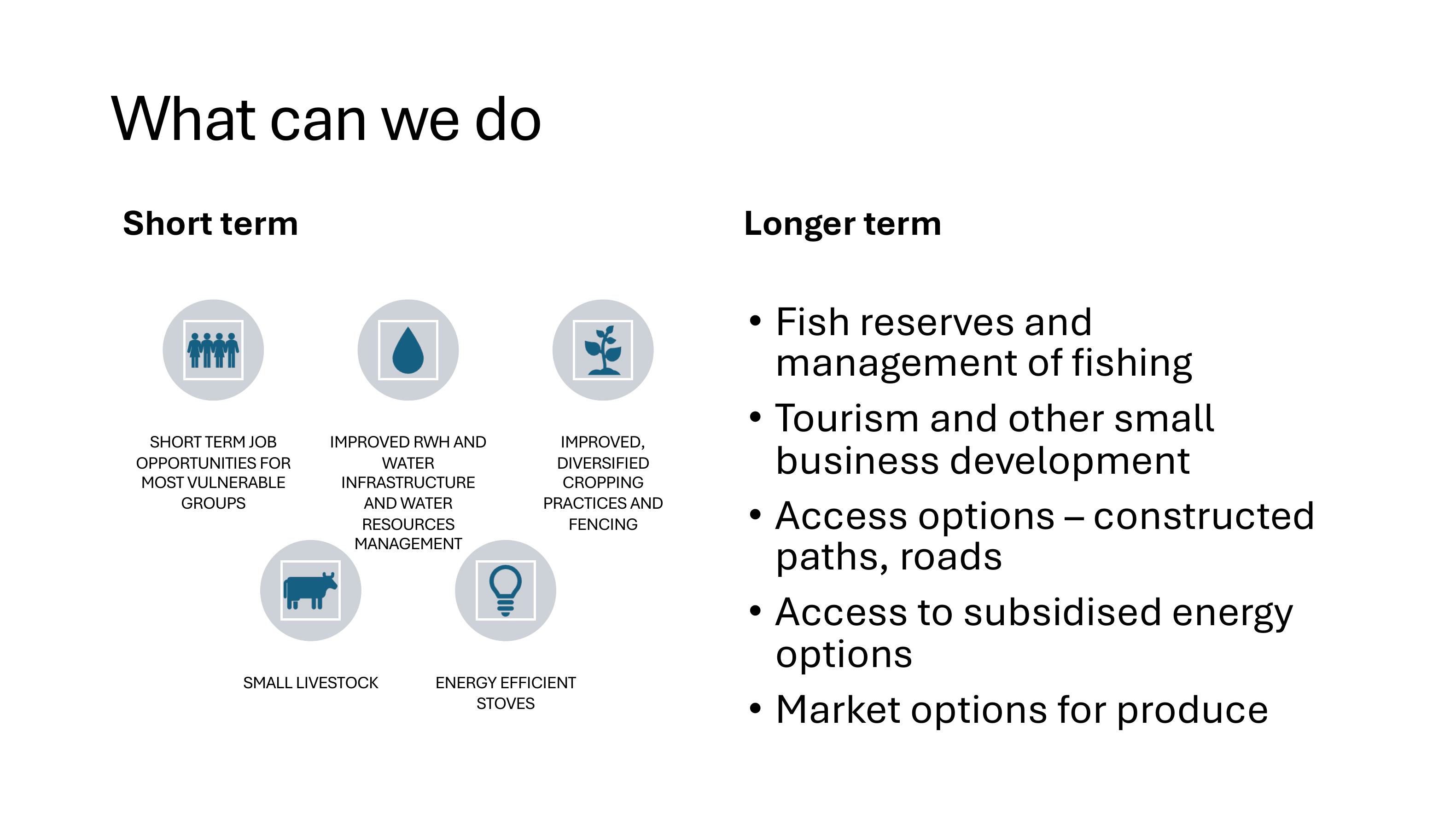
Nkovokenivulnerability
assessment
March 2024

Fewersmall
children and
pensioners,
more people
between 35-
59yrs old
Agegroup
in years
StasSA
%
Nkovokeni %
0
-14
28,8
21
15
-34
35,1
32
35
-59
27,1
41
>60
9
6
Whatdoour
households
look like
Why?

What makes us poor
Womenheaded
Single mothers
Child headed
Disability (mental and physical)
-employment/unemployment (everyone)
-grants /no grants (36-59yr grouping)
-livelihood activities (nature-based) (no fishing, livestock or
cropping)
-Seasonality and/or stability of incomes
Most well-off households in
the village:
-Spaza/shebeen
-contract fishing
-more than one pension

Almost everyone falls below the
national poverty line. (Red and
yellowgroups suffer from food
shortages)
Some households are extremely
poor-no pensions, no contract
jobs.
Some are less poor – pensions,
fishing, remittances, contract
jobs
Some are okay but still poor –
small businesses, fishing,
pensions, more than one
person with contract
employment
Percapitaincome
Percentageof
households
<R1
558/month
88%
<R800/month
47%
R800
-R1000/ month
18%
R1175
-R2260/month
35%
Femaleheaded
household average
R970
Maleheaded
household average
R1006
Generally coastal harvesting,
fishing, crop production – for
survival only- adds little to
livelihoods.
Ownership of cattle helps

Sources of
income
Source of income in order of
importance
Pensions
Contract Wild Oceans
Contract
iSimangaliso
Child grants
Small businesses
Fishing
Remittances
Selling reeds
Local farmproduce
Food aid
RANKING: Vote for the most
important source of income
– you can vote for more than
one

Whatmakes
us
vulnerable
•Lack of Access to resources (distance,
labour, entitlements)
•Lack of Access to basic needs (water,
sanitation, energy)
•Access to housing (type and number of
dwellings)
•Local rules ( access, gender)
•Water
•NO HOUSEHOLD LEVEL ACCESS
•ONLY WHAT CAN BECARRIED
•SOME HH’s TOO FAR AWAY FROM
COMMUNAL BOREHOLE TO BENEFIT
•Sanitation
•NO TOILETS (76%)
•Living conditions
•HOUSING NOT STURDY ENOUGH FOR
RWH
•LIMITED ENERGY OPTIONS – ALL ARE
EXPENSIVE
•Transport
•NO REALISITC OPTION FOR
IMPROVEMENT OF ACCESS TO THE
VILLAGE
•Local governance
•TC, LM NOT ACTIVELY SUPPORTING
COMMUNITY
•NO INTERNAL ORGANISATION
(Church and funeral groups do exist)
•Natural resources
•_OVERHARVESTING (COASTAL AND
FISH
•NO FENCING OR STRCUTURES TO
PROECT CROPS FROM WILDLIFE
Reduction of natural resources
Damage to houses and
infrastructure
Less water in the landscape
Impact of CC
-Longer droughts
-More heatwaves
-More severe storms
What other
hazards/risks are
there?

What can we do
Short term
SHORT TERM JOB
OPPORTUNITIES FOR
MOST VULNERABLE
GROUPS
IMPROVED RWH AND
WATER
INFRASTRUCTURE
AND WATER
RESOURCES
MANAGEMENT
IMPROVED,
DIVERSIFIED
CROPPING
PRACTICES AND
FENCING
SMALL LIVESTOCKENERGY EFFICIENT
STOVES
Longer term
•Fishreserves and
management of fishing
•Tourismandothersmall
business development
•Access options – constructed
paths, roads
•Access to subsidised energy
options
•Market options for produce